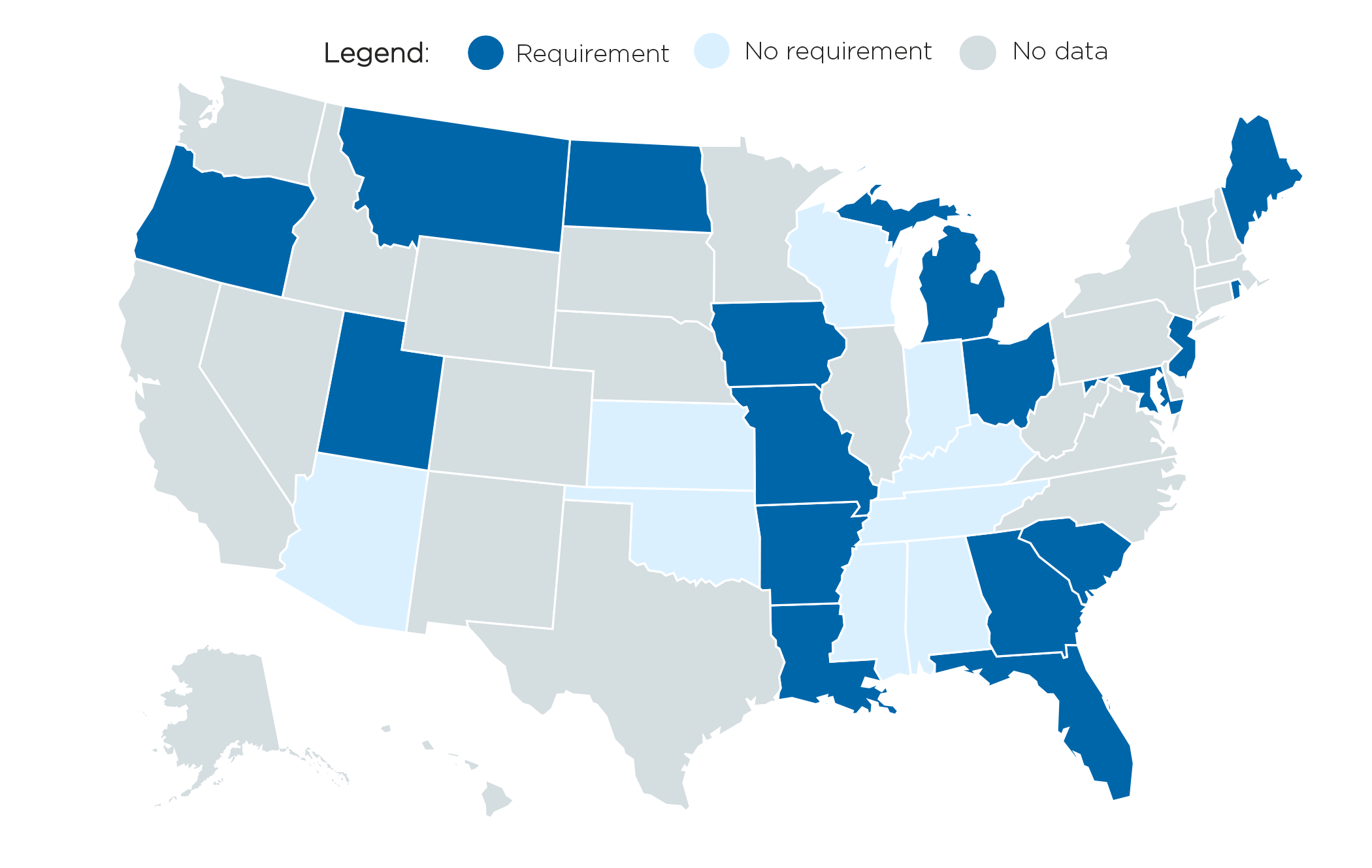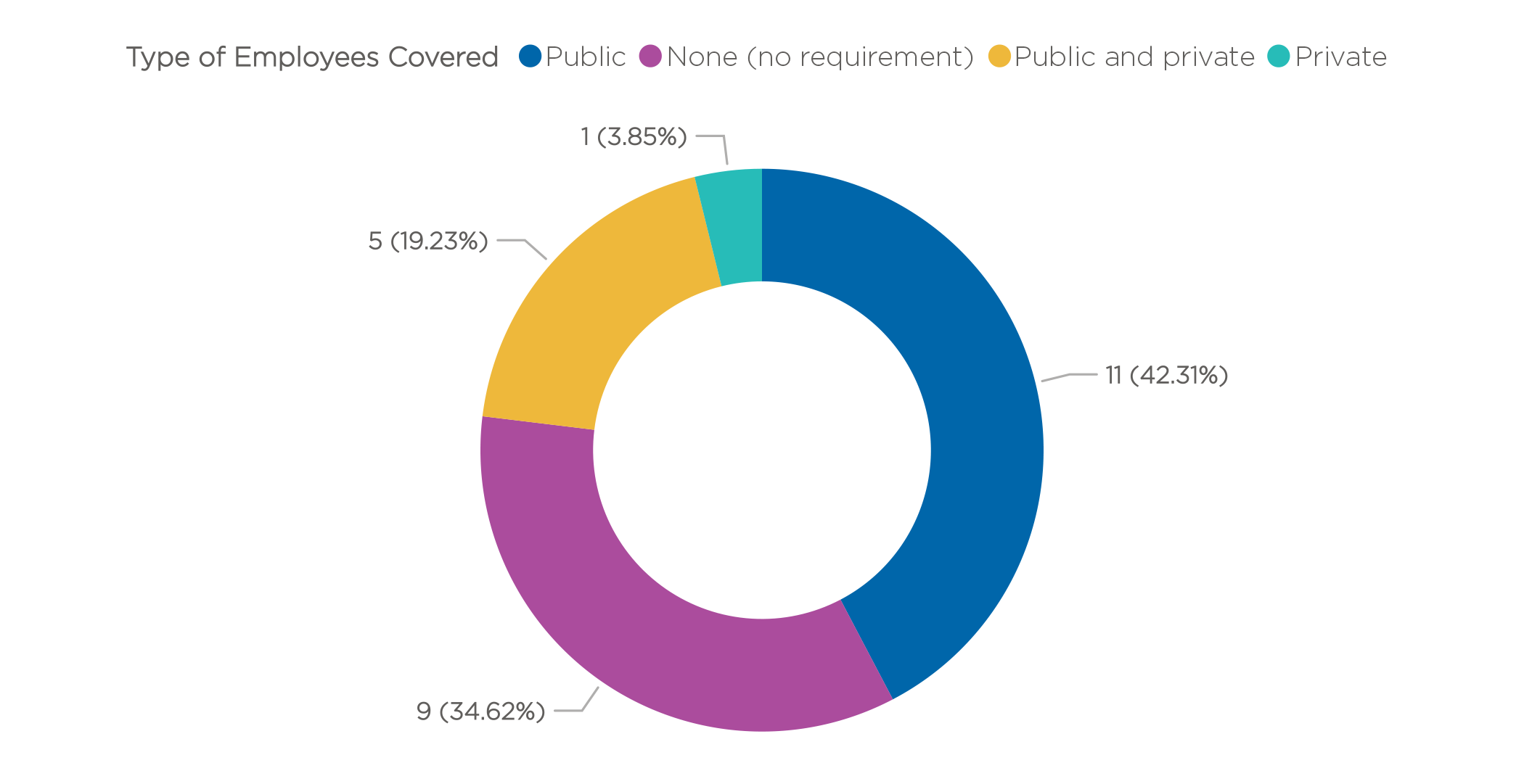Paid leave can take many forms, including paid family and medical leave, paid sick time, paid time off and bereavement leave. At the federal, state and local level, there are varying laws that require both government and non-government employees to receive a combination of paid and unpaid leave.
Paid leave offers many benefits; however, there are additional costs that are associated with paid leave policies, both to public and private employers. For more information on the trends in paid leave preemptions of municipal authority to regulate private employers, see NLC’s new resource Paid Leave & Local Authority:
Paid Leave and Public Employers
Under state paid leave preemptions, municipalities typically retain power to offer their staff benefits at their discretion. However, localities in states with regulatory “floors” may be required to grant their employees a minimum amount of leave, with the freedom to offer additional leave as they desire. Less often, localities in states with strong public-sector paid leave mandates could be subject to vertical consistency requirements—which prohibit deviation from state standards—that amount to ceiling preemption.
For more information on how paid leave preemption affects private-sector employees, see NLC’s Paid Leave and Local Authority.
State-level paid leave requirements may exist in states with or without paid leave preemption. These requirements mandate that employers provide a minimum amount of leave—whether sick, family, or both—to eligible workers. Of states preempting local paid leave regulations, 17 have these requirements (data for this question is only available for states that preempt).
Among States Preempting Local Paid Leave Regulations, 17 Have Some Form of Paid Leave Requirement
states requiring employers to provide paid leave, 2022

Note: Data on paid leave requirements is available only for states with laws preempting local paid leave regulations. Other states may still require certain employers to provide paid leave.
Among states with paid leave preemption, requirements for public-sector employers exist in 11 states. Only five states require both public and private employers to provide paid leave and one state requires just private employers to provide leave.
Among States Preempting Local Paid Leave Regulations, Requirements for Public-Sector Paid Leave are Most Common
Type of paid leave required in states preempting local regulations, 2022

Note: This chart includes only the 26 states with data regarding paid leave requirements and should not be interpreted as representative of all states.
Local Governments in Action
View the following case studies highlighting specific examples in Ferndale, Michigan and Hopkinton, New Hampshire.
Paid Leave Resources and Checklist
As localities consider designing paid leave policies for their employees, they can look to policies developed in other localities while considering the needs in their community and navigating state laws. Local leaders considering these policies can use this checklist to consider the unique paid leave needs in their community:
What innovative practices are there for municipal paid leave policies?
Talk with other local governments in the same state, state with similar paid leave laws or private employers to learn about their paid leave policies. A Better Balance has compiled best practices and a model policy for creating a family and medical leave policy for local government employees. Also consider challenges, like how your municipality would pay for the paid leave policy, while exploring different policy models.
What are the current workforce needs for municipal staff?
Analyze and examine the current workforce needs for municipal staff and what issues the paid leave policy will seek to address. Consider challenges your employees face, like childcare access, weather-related problems, or gender-equity.
What stakeholders within the local government do you need to engage with?
Local governments employ a diverse workforce, so work with different departments to ensure the new policy addresses their unique staffing needs. For example, fire and police departments may have minimum staffing requirements or different shift structures compared to other municipal departments.
How is your municipality, or its designated human resources department, going to evaluate the policy?
A new paid leave policy may need to be evaluated regularly to ensure the policy meets the needs of employees in various departments and roles.
For more information on policy development for private employers and related state laws, see NLC’s brief on Paid Leave and Local Authority. For more information on employee benefits for employers, see the US Bureau of Labor Statistics resources.










